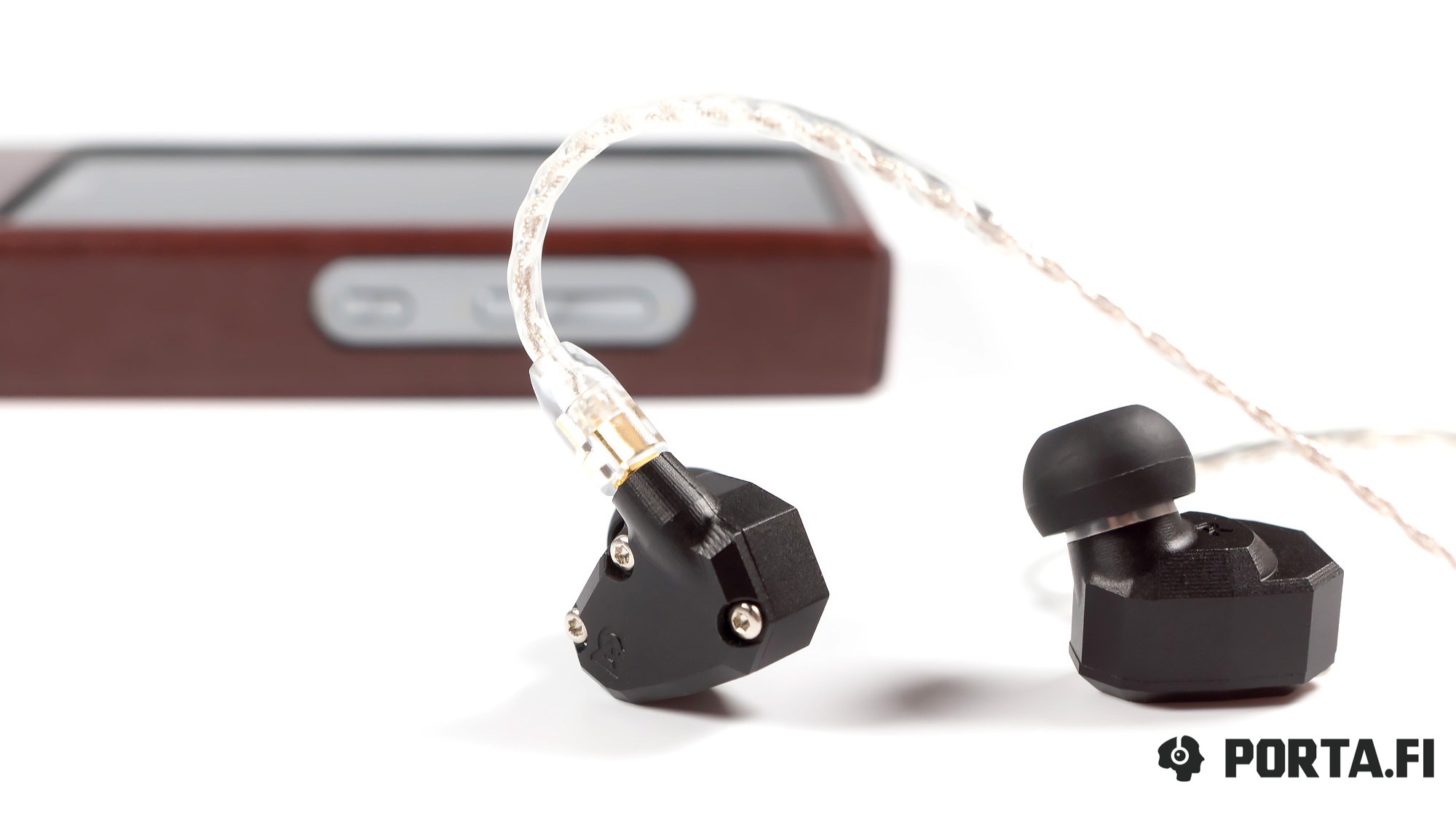The armature lineup by Campfire Audio is full of models that sport typical angled bodies. They are different in color and number of transducers. I personally don’t like the abundance of colors since I prefer more reserved approach, and if there is choice I will prefer black. Recently there has appeared a limited version of Andromeda in black color with 7 drivers named Gold Edition. But it is just an announcement. For now Campfire Audio has only one model made in black — Orion. Much time passed and now it’s not produced anymore but even today the model stays competitive. Let’s see how the Campfire Audio road to glory has begun and if it’s a viable idea to buy second hand Orions today.
The IEMs are packaged in dark blue box with sticker and printing on top. Inside there is a thick jeans zipped pouch that is very convenient and comfy, as well as tips collection and cleaning tool. And of course, Orions with cable. The nozzle is made of metal and it is not long and has good and comfy angle.
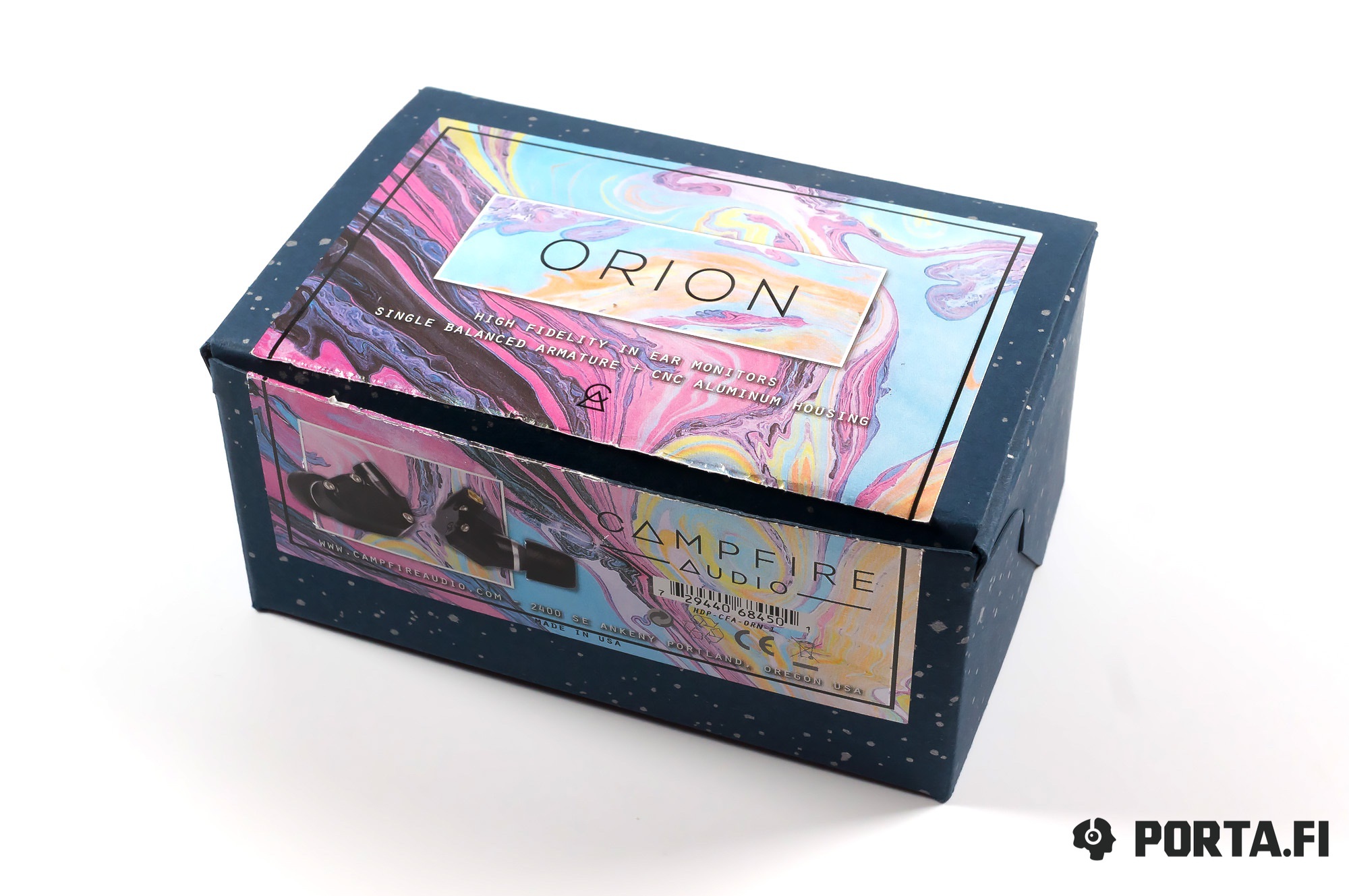
The metal headphone body contains one driver and has quality mmcx-connectors without any problems, so there are no obstacles in changing cables. This is what I like in early CA models — the cable is standard, of average thickness and long enough, it does not tangle much, a little stiff and has slight microphone effect. It also has ear hooks. The cable is made of silver-plated copper in transparent isolation. The connector is unbalanced and it may be not convenient on one hand, but on the other may make you change the cable. It is good for asking price, but you can never be wrong with upgrade. I have come across information that a special water-proof polymer is used to protect the cable during nasty weather. I can’t add anything to it, apart from the fact that this cable is known as Tinsel Wire and is used as a stock one for previous models, including Andromeda (it costs 150 USD on the official website). It does not become dark, stiff and does not oxidize over time. I have tried Orions with the following cables — iBasso CB13, Whiplash Audio TwAg v3, Alo Audio Reference 8, Ambient Acoustic Ambient Cord. All of them have shown good results but I have liked the first one the most.
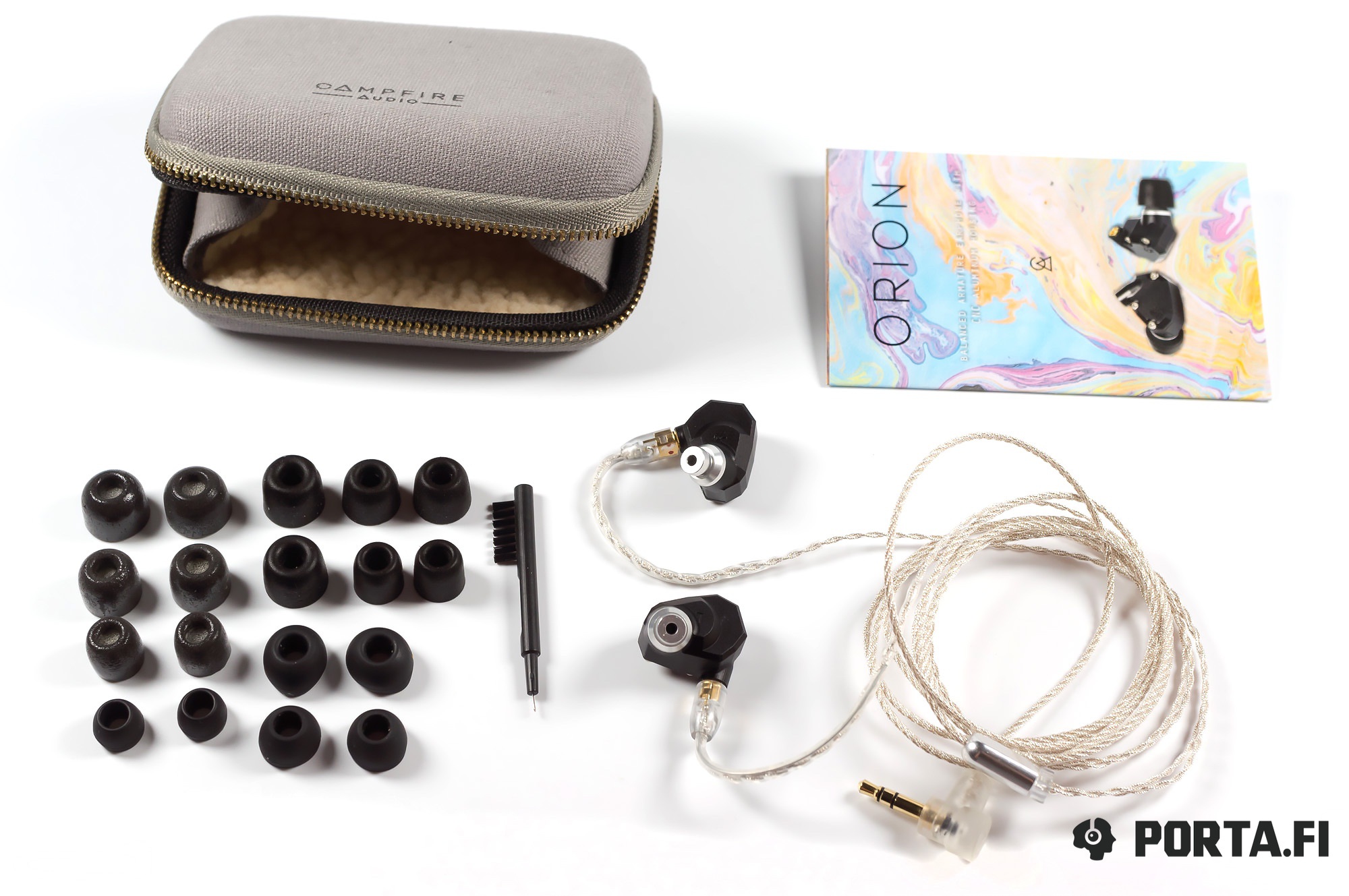
The fit is the same as with old models, since it is the same body and not long nozzles. For me it is ergonomic enough, but there are complaints from other people because of sharp angles. Isolation is average, but as always it depends on the tips, as well as the sound, so I recommend to spend some time and not to just stick to stock ones. The impedance is non standard — 14 Ohm, but because of good sensitivity of 114 dB the IEMs are not that sensitive to source noise as, let me say, Andromedas.
In order to make single drivers sound good, they must be well paired and CA dampened them into special cameras. As a result we get a warm and round sound, full of overtones, emotions and details.
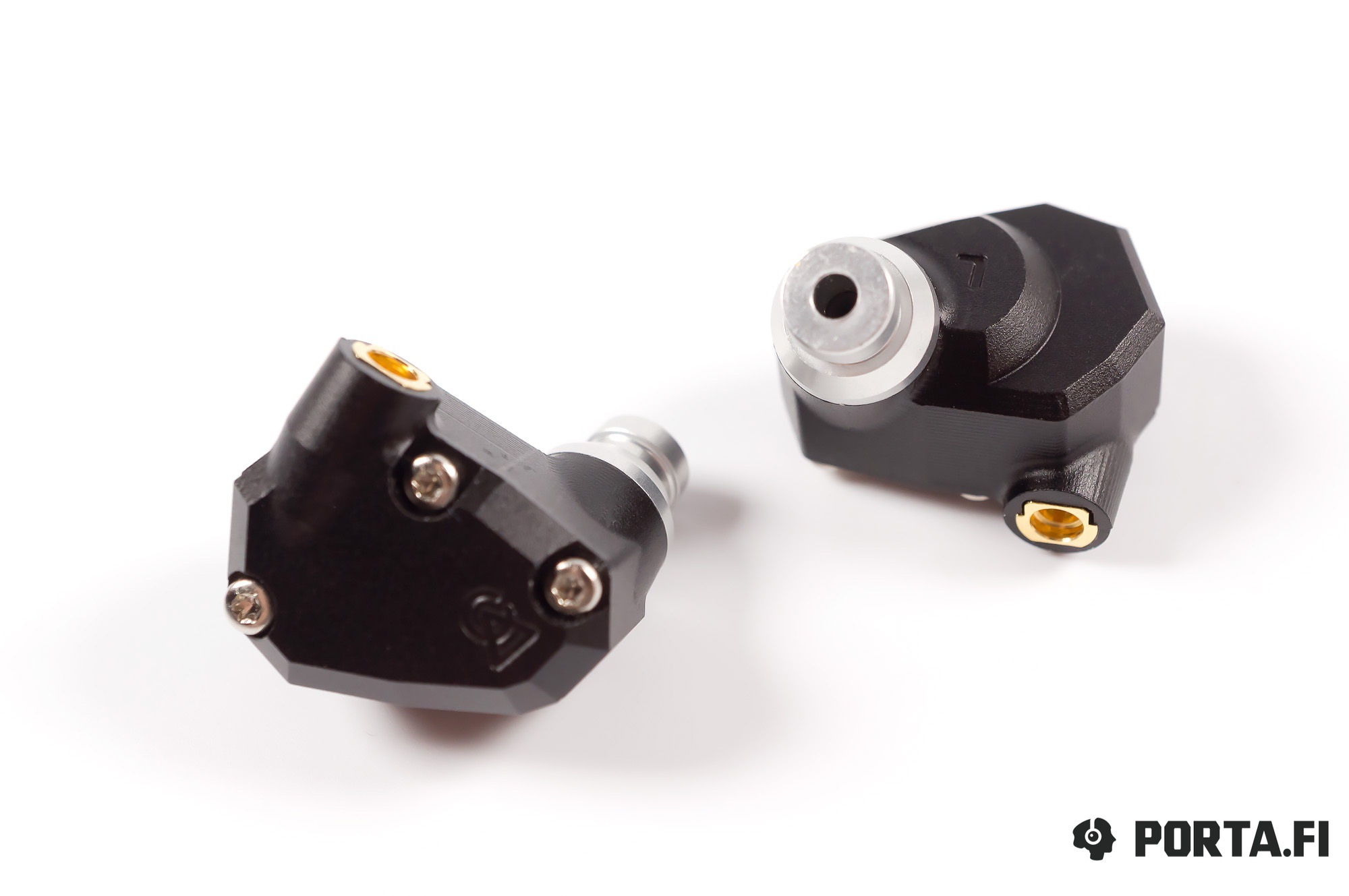
The lows are detailed, informative and have good quantity. There is slight accent. They are massive with good control and fullness, mainly because of good sub bass quantity. Articulation is slightly diminished since the IEMs have warm touch. This leads to slam variations but sounds monumental and does not do any harm to frequency range. In total, bass is in place, speed and details are not a problem for armature driver. The decays are slightly shortened. As a result, there is a paradox when bass is enough and has good power and massiveness, but it doesn’t put usual pressure on ears. In return you get many details that cannot be heard on more typical or basshead presentation. Actually bass sounds likely to very good dynamic driver.
Mids are what makes the IEMs shine, they stand out. They lack harshness but have good resolution. They show peculiarities but don’t make them sound too apart. The sound stage is monolithic but not lacking details. Attacks are not very sharp but are thick enough. Decays are a little bit rough but still maintain their own charm. The warm presentation provides with needed emotions. Instruments are well textured, sound full and lively. IEMs have good layering, the instruments are well positioned and create a lively and full of details picture. There is no sibilance, though.
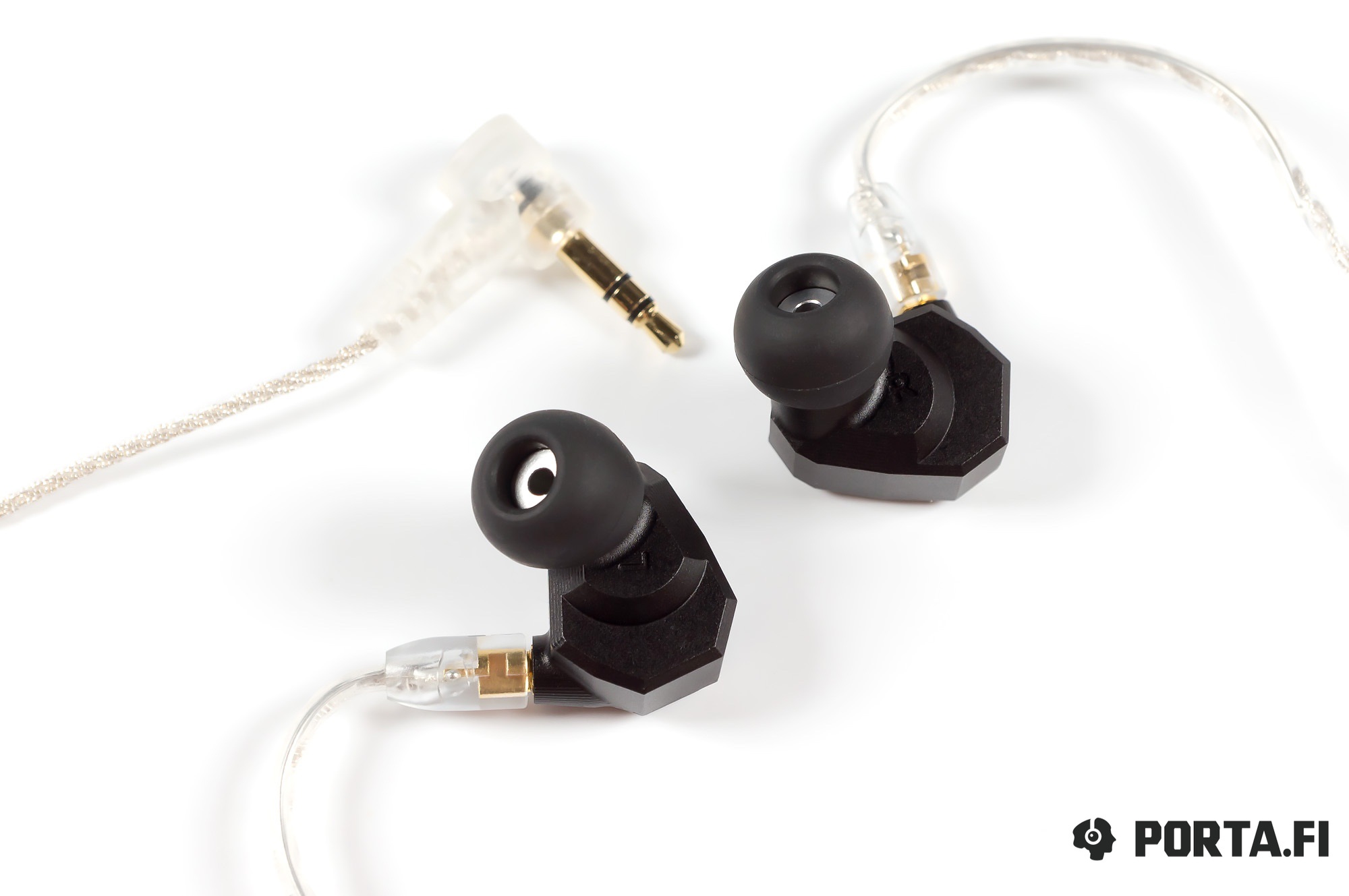
The highs are smooth, whole and round, they lack traditional armature harshness, but have good speed and sound full in terms of attacks. Decays are shortened, though. There is good details amount but since highs are laid back they lack small nuances. It is not too critical though because of emotional overall presentation. I must say this approach is good, but the IEMs are somewhat dark and I don’t like it since it ruins planned sound — the planned airiness goes away. Some bad recordings benefit from it, but if we speak about timbre, the IEMs sometimes are not just right and true. Of course, this is subjective and many people will like this presentation.
Overall soundstage is not too narrow but it is still not too wide. It however has good depth and instrument localization due to good volume.
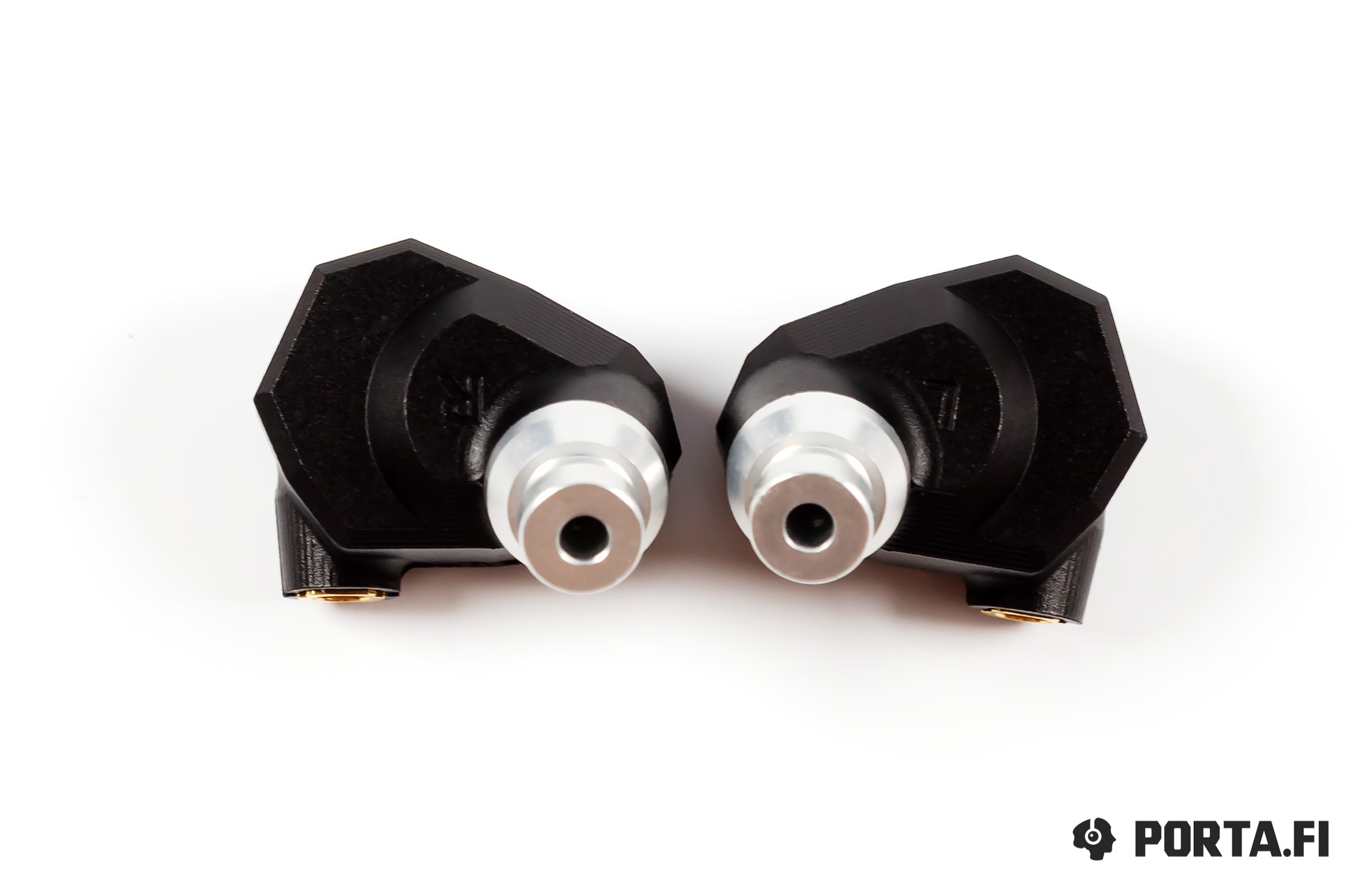
Orions are not critical to recording quality and can deal with everything. Some bad recorded tunes can benefit a lot from such presentation, but there are examples when the sound becomes intolerable. In terms of source the IEMs are not too picky. Of course it makes little sense to listen them from smartphone, but I have had zero problems from players, such as QLS 360, Cayin N5-II, iBasso DX200 with any amp or LP 5 Pro. However due to fun presentation of IEMs the difference between the sources has not been that striking. As for genres, it also depends on what listener prefers. I have enjoyed the IEMs with live, electronic and metal music, but again, not all tracks, since I don’t like dark IEMs. However if you are not basshead but seek for something to tame your source highs or just don’t like too many highs in your recordings, Orions may become endgame in your search.
Translated by: Vadim Kolchev

